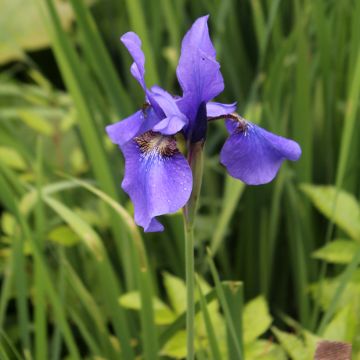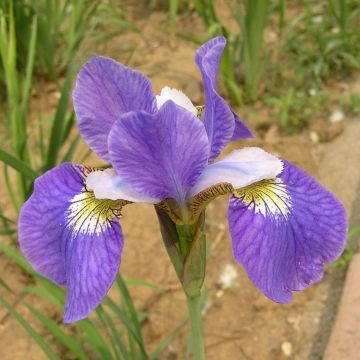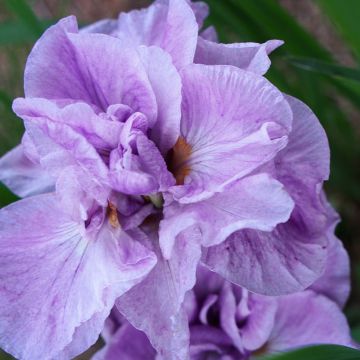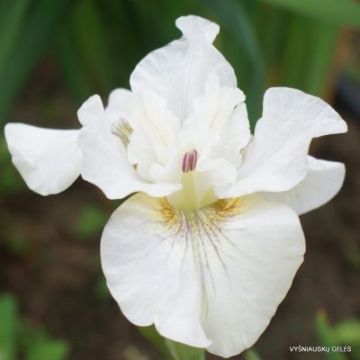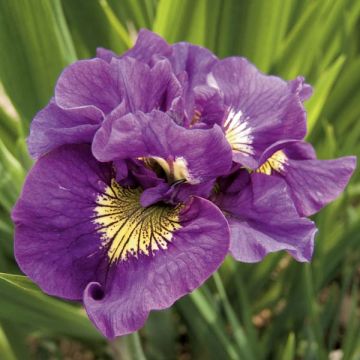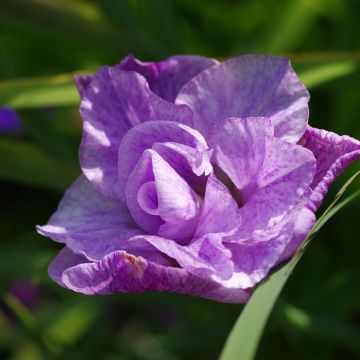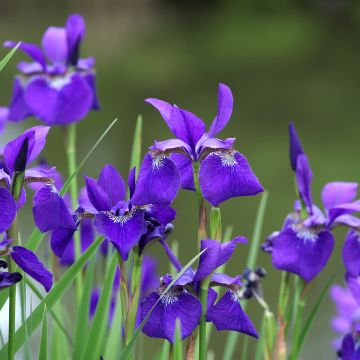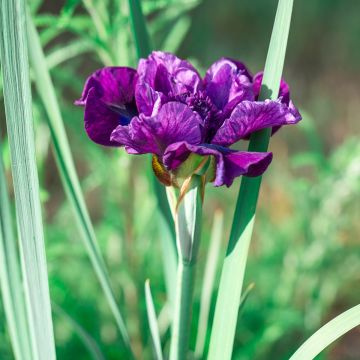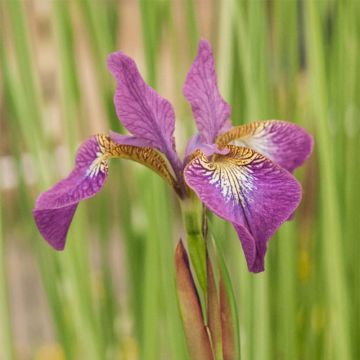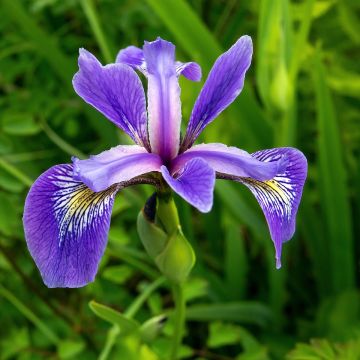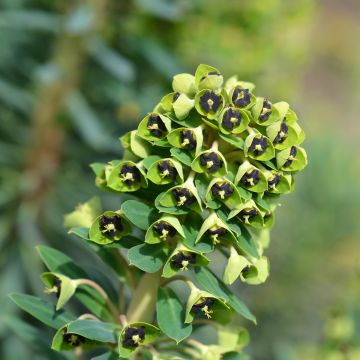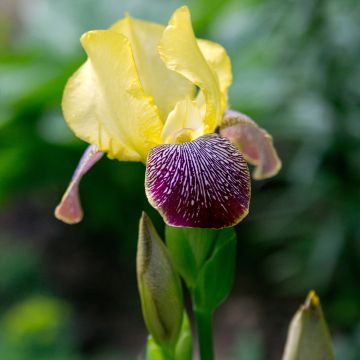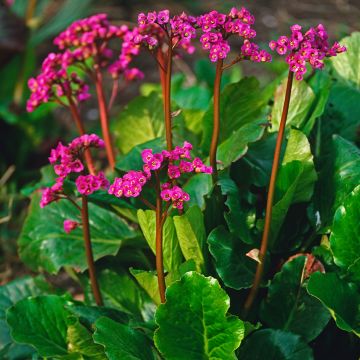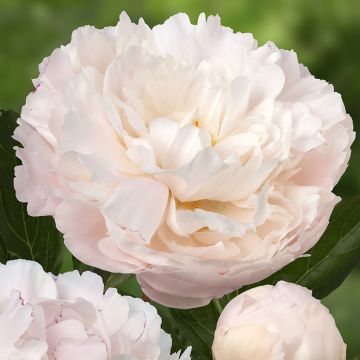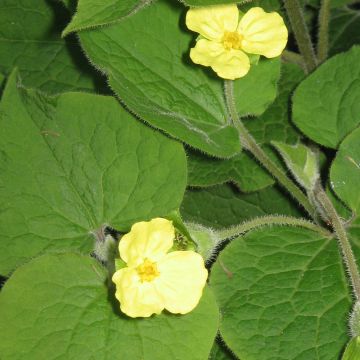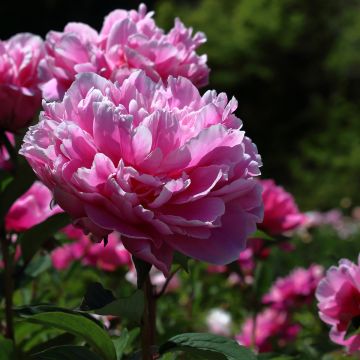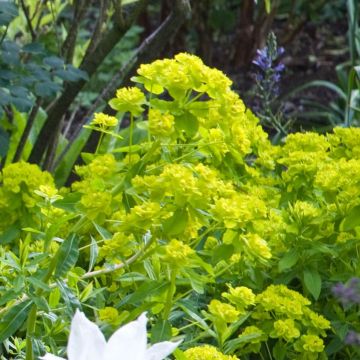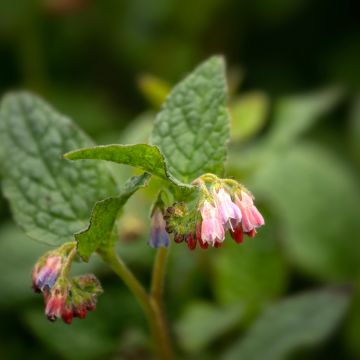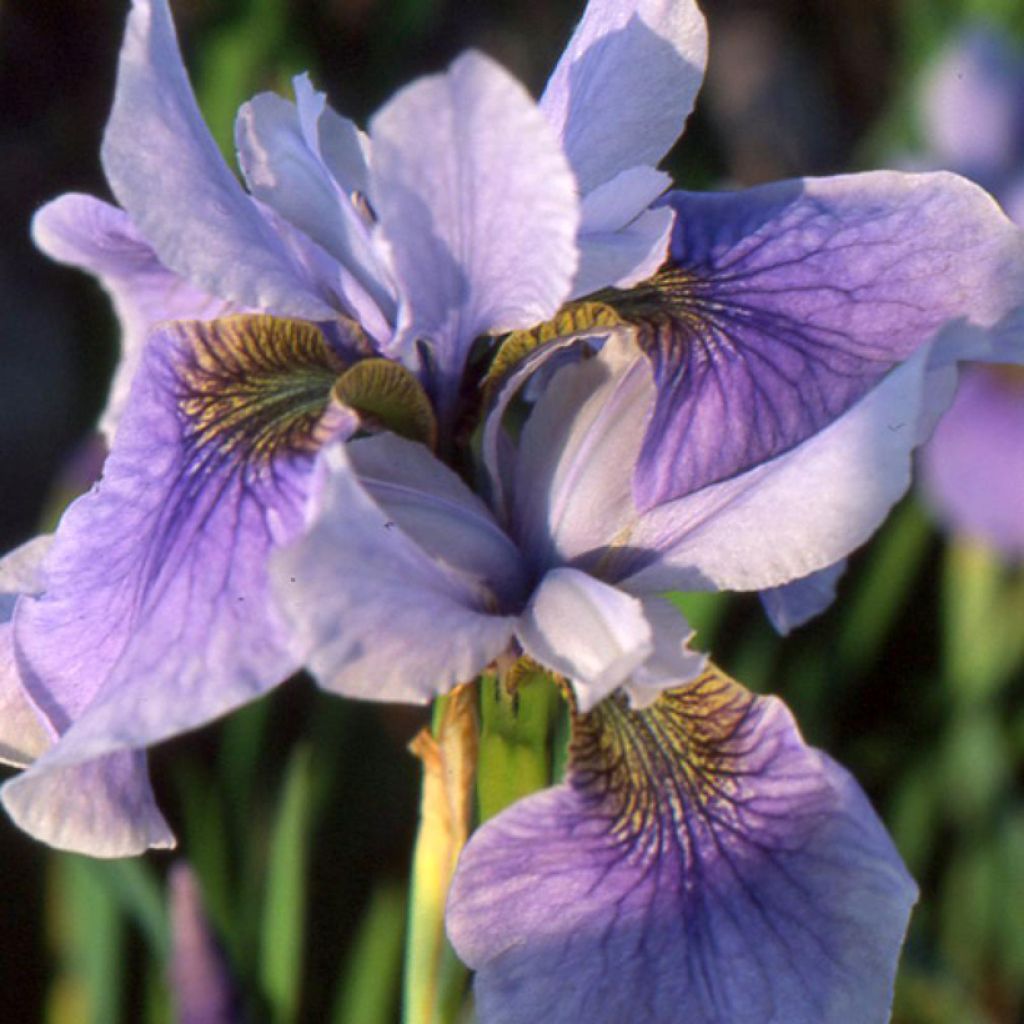

Iris sibirica Cool Spring - Siberian Iris
Iris sibirica Cool Spring - Siberian Iris
Iris sibirica Cool Spring
Siberian Iris, Siberian Flag
This item cannot be shipped to the selected country
Delivery charge from €5.90
More information
Schedule delivery date,
and select date in basket
This plant carries a 12 months recovery warranty
More information
We guarantee the quality of our plants for a full growing cycle, and will replace at our expense any plant that fails to recover under normal climatic and planting conditions.
From €5.90 for pickup delivery and €6.90 for home delivery
Express home delivery from €8.90.
Does this plant fit my garden?
Set up your Plantfit profile →
Description
Go for lavender blue with the spring flowers of the Siberian Iris 'Cool Spring'. Fond of moist to wet soil, it is perfect for embellishing the edges of a pond. This architectural, clump-forming perennial plant can easily be integrated into a flower bed or a mixed border in an English garden. Once established, it tolerates drought quite well and requires little maintenance.
Iris sibirica 'Cool Spring' is a rhizomatous perennial plant and deciduous member of the Iridaceae family. The wild species, Siberian iris, grows on heathlands and wet meadows in central and eastern Europe, northeastern Turkey, and Russia. The offered varieties are mainly the result of hybridisation between Iris sibirica and Iris sanguinea. Their flowers are generally larger and display a wide range of colours.
This variety of Siberian iris 'Cool Spring' offers beautiful lavender blue flowers in May-June. They consist of three sepals in lavender blue tinged with yellow at the base and veined with a deeper blue. The three petals and stigmas are of a slightly lighter shade of lavender blue. Its large flowers rise up to 1m above the ground, well above the clump of linear and green, deciduous leaves which turn yellow in autumn before drying up.
With the Siberian iris 'Cool Spring', play with shades of blue. Create your flower beds and borders by combining it with other perennials that thrive in moist soil and have blue flowers, such as Camassia 'Blue Melody', Delphinium belladonna 'Bellamosum', or Aquilegia 'Clementine Blue' with double flowers. The colour blue is very present in the range of Siberian irises, so don't hesitate to mix them. Besides, the effect is greater when they are planted in large groups. Here are some varieties that might catch your attention: 'Blue King' with blue-violet flowers, 'Blue Moon' with bluish-violet flowers, or 'Concorde Crush' with intense blue-violet double flowers.
Report an error about the product description
Flowering
Foliage
Plant habit
Botanical data
Iris
sibirica
Cool Spring
Iridaceae
Siberian Iris, Siberian Flag
Cultivar or hybrid
Other Siberian Iris
Planting and care
Iris sibirica 'Cool Spring' appreciates rich and moist, preferably acidic to neutral soils. In heavy soil that is at risk of becoming waterlogged, plant your iris on a small mound. Add a good amount of well-decomposed compost at the time of planting. If your soil is alkaline (chalky), adding ericaceous soil will help acidify it. Although Siberian iris prefers moist soils, it can tolerate short periods of drought once established. Choose a sunny or partially shaded location (especially in the south). It needs its daily dose of sun (at least 6 hours) to flower.
In terms of maintenance, it is a relatively easy plant to care for. Simply cut the flower stems at the base after flowering and remove the dry foliage as soon as it is no longer decorative. Cut it and leave it in place as mulch.
Plant during the dormant period, from late September to mid-April, outside of freezing periods. In warm climates, plant in September, while in regions with cold winters, wait until late March or early April. In this case, your irises will only bloom the following year. Plant the rhizomes at a depth of 3 to 5 cm. Siberian irises can remain in place without division for a good ten years. When the centre of the clump no longer blooms or forms a crown, it is time to divide. The ideal period is late winter, in February-March.
Planting period
Intended location
Care
This item has not been reviewed yet - be the first to leave a review about it.
Spring flowering perennials
Haven't found what you were looking for?
Hardiness is the lowest winter temperature a plant can endure without suffering serious damage or even dying. However, hardiness is affected by location (a sheltered area, such as a patio), protection (winter cover) and soil type (hardiness is improved by well-drained soil).

Photo Sharing Terms & Conditions
In order to encourage gardeners to interact and share their experiences, Promesse de fleurs offers various media enabling content to be uploaded onto its Site - in particular via the ‘Photo sharing’ module.
The User agrees to refrain from:
- Posting any content that is illegal, prejudicial, insulting, racist, inciteful to hatred, revisionist, contrary to public decency, that infringes on privacy or on the privacy rights of third parties, in particular the publicity rights of persons and goods, intellectual property rights, or the right to privacy.
- Submitting content on behalf of a third party;
- Impersonate the identity of a third party and/or publish any personal information about a third party;
In general, the User undertakes to refrain from any unethical behaviour.
All Content (in particular text, comments, files, images, photos, videos, creative works, etc.), which may be subject to property or intellectual property rights, image or other private rights, shall remain the property of the User, subject to the limited rights granted by the terms of the licence granted by Promesse de fleurs as stated below. Users are at liberty to publish or not to publish such Content on the Site, notably via the ‘Photo Sharing’ facility, and accept that this Content shall be made public and freely accessible, notably on the Internet.
Users further acknowledge, undertake to have ,and guarantee that they hold all necessary rights and permissions to publish such material on the Site, in particular with regard to the legislation in force pertaining to any privacy, property, intellectual property, image, or contractual rights, or rights of any other nature. By publishing such Content on the Site, Users acknowledge accepting full liability as publishers of the Content within the meaning of the law, and grant Promesse de fleurs, free of charge, an inclusive, worldwide licence for the said Content for the entire duration of its publication, including all reproduction, representation, up/downloading, displaying, performing, transmission, and storage rights.
Users also grant permission for their name to be linked to the Content and accept that this link may not always be made available.
By engaging in posting material, Users consent to their Content becoming automatically accessible on the Internet, in particular on other sites and/or blogs and/or web pages of the Promesse de fleurs site, including in particular social pages and the Promesse de fleurs catalogue.
Users may secure the removal of entrusted content free of charge by issuing a simple request via our contact form.
The flowering period indicated on our website applies to countries and regions located in USDA zone 8 (France, the United Kingdom, Ireland, the Netherlands, etc.)
It will vary according to where you live:
- In zones 9 to 10 (Italy, Spain, Greece, etc.), flowering will occur about 2 to 4 weeks earlier.
- In zones 6 to 7 (Germany, Poland, Slovenia, and lower mountainous regions), flowering will be delayed by 2 to 3 weeks.
- In zone 5 (Central Europe, Scandinavia), blooming will be delayed by 3 to 5 weeks.
In temperate climates, pruning of spring-flowering shrubs (forsythia, spireas, etc.) should be done just after flowering.
Pruning of summer-flowering shrubs (Indian Lilac, Perovskia, etc.) can be done in winter or spring.
In cold regions as well as with frost-sensitive plants, avoid pruning too early when severe frosts may still occur.
The planting period indicated on our website applies to countries and regions located in USDA zone 8 (France, United Kingdom, Ireland, Netherlands).
It will vary according to where you live:
- In Mediterranean zones (Marseille, Madrid, Milan, etc.), autumn and winter are the best planting periods.
- In continental zones (Strasbourg, Munich, Vienna, etc.), delay planting by 2 to 3 weeks in spring and bring it forward by 2 to 4 weeks in autumn.
- In mountainous regions (the Alps, Pyrenees, Carpathians, etc.), it is best to plant in late spring (May-June) or late summer (August-September).
The harvesting period indicated on our website applies to countries and regions in USDA zone 8 (France, England, Ireland, the Netherlands).
In colder areas (Scandinavia, Poland, Austria...) fruit and vegetable harvests are likely to be delayed by 3-4 weeks.
In warmer areas (Italy, Spain, Greece, etc.), harvesting will probably take place earlier, depending on weather conditions.
The sowing periods indicated on our website apply to countries and regions within USDA Zone 8 (France, UK, Ireland, Netherlands).
In colder areas (Scandinavia, Poland, Austria...), delay any outdoor sowing by 3-4 weeks, or sow under glass.
In warmer climes (Italy, Spain, Greece, etc.), bring outdoor sowing forward by a few weeks.

































